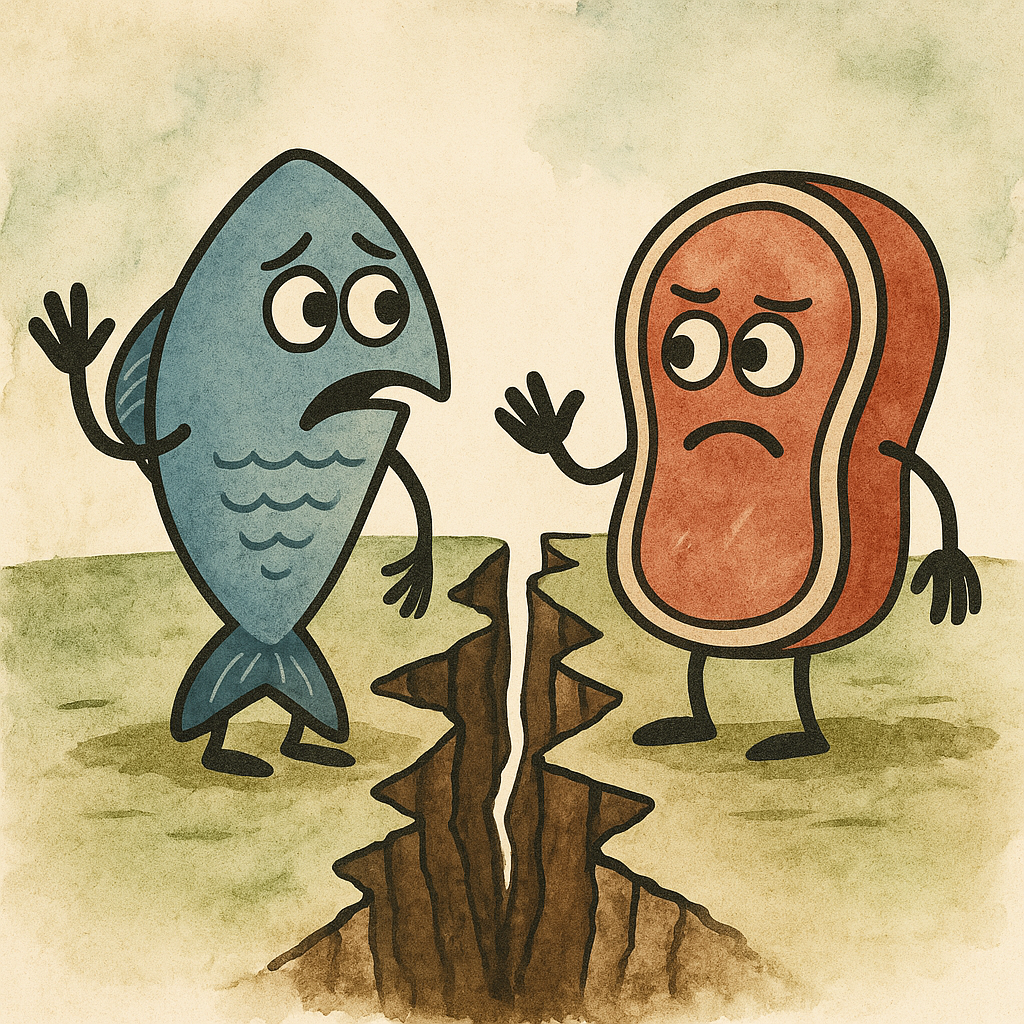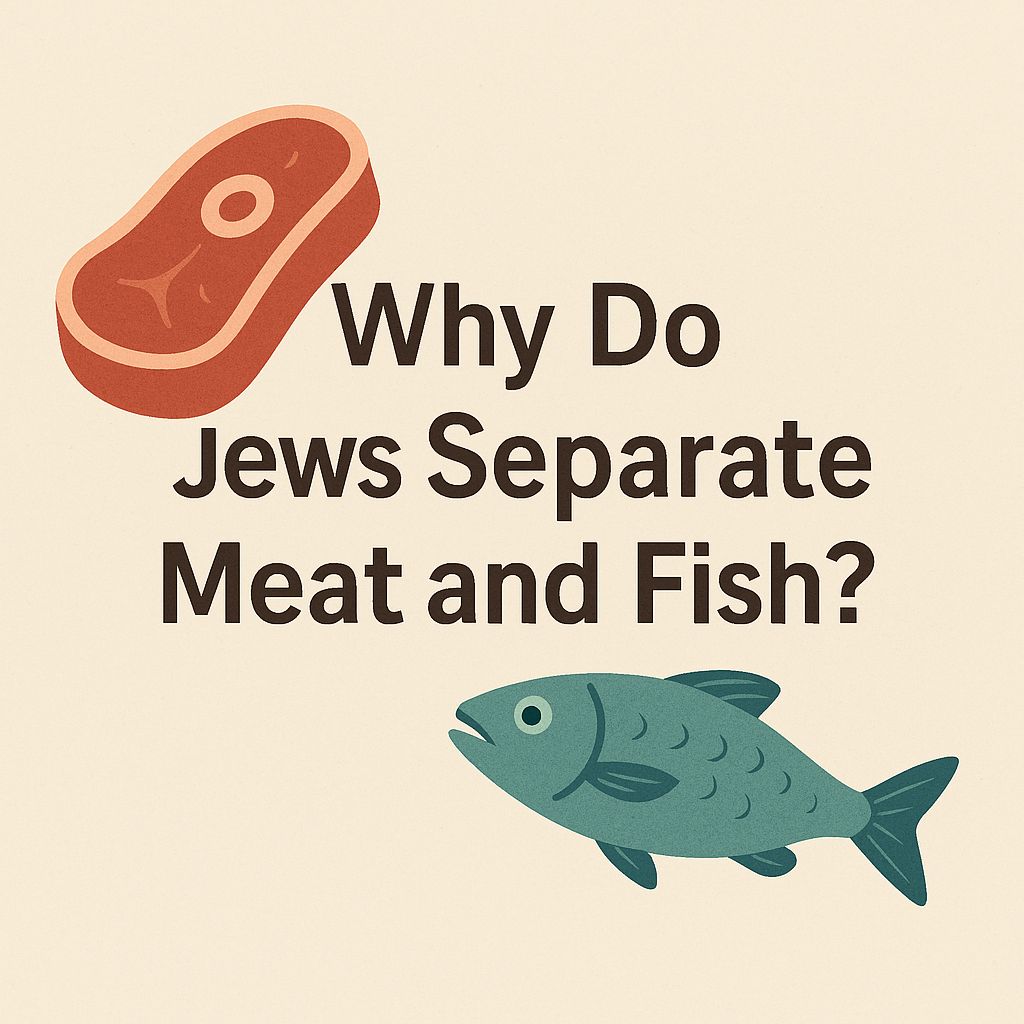
Kosher dietary laws include specific rules about separating meat and dairy, but the status of fish is less clearly defined. While fish is considered pareve (neutral) and can be eaten with dairy, some traditions avoid mixing it with meat. The reasons behind these practices vary, rooted in interpretations of Jewish texts and customs.
In Orthodox Judaism, meat and fish are not eaten together. This might seem surprising when you find out that the Torah doesn’t say anything about it. So where does the idea come from?
It’s Not from the Torah
First, it’s important to know that the Torah doesn’t mention anything about separating meat and fish. This is unlike mixing meat and dairy, which is prohibited in the Torah.
The meat and fish rule comes from the Talmud, a large collection of rabbinic writings that discuss Jewish law and tradition.
The Talmudic Source for Separating Meat and Fish
The main source is in the Talmud, Tractate Pesachim 76b. It says that eating meat and fish together can lead to a health risk. The exact line mentions that doing so may cause “davar acheir,” which literally means “another thing,” often understood to refer to a type of illness. Some later commentaries even mention skin disease or bad breath.
Back then, rabbis took this seriously. Even though medical science was different (and limited), health warnings in the Talmud were treated with care. As a result, many Jewish communities developed the habit of keeping meat and fish separate.
How Halacha Interprets It
Jewish law, or halacha, developed over time based on these Talmudic sources. Some major rabbis, like Rambam (Maimonides), don’t mention this issue at all in their legal writings. That could be a clue that it wasn’t a major concern in many Jewish communities.
However, later authorities, like the Shulchan Aruch (a central code of Jewish law from the 1500s), did mention the practice. In Yoreh De’ah 116:2, Rabbi Yosef Karo writes that one should not eat fish and meat together because it is dangerous. The Rema, who added Ashkenazi rulings, agrees and adds that people should clean their mouths or eat something in between.
So, by the 16th century, it had become an accepted rule in both Sephardi and Ashkenazi traditions.

What About Separating Meat and Fish Today?
Today, not all Jews follow this rule. Some modern rabbis argue that since the original reason was health-related, and we now know there’s no proven danger, the rule isn’t required. Others say that since it became part of halachic tradition, we should keep it even if the reason no longer applies.
Among observant Jews, it’s still common to:
- Avoid cooking or serving meat and fish together
- Rinse the mouth or eat something neutral (like bread) between eating the two
- Use separate utensils if serving one after the other
Fish and meat aren’t served on the same plate in many kosher restaurants or homes. You’ll often see fish served as a starter, with meat later in the meal.
Why Still Follow It If It’s Not Dangerous?
There are a few reasons:
- Respect for Tradition: Many Jews keep it simply because it’s what their parents and grandparents did.
- Halachic Authority: Once something becomes part of halachic practice, many believe it’s better to continue observing it unless there’s a clear reason not to.
- Caution: Even if the danger isn’t clear, some people feel it’s better to be careful, especially regarding health-related practices mentioned in the Talmud.
- Community Norms: In religious communities, this separation is just part of how things are done.

In Summary
The practice of separating meat and fish isn’t in the Torah. It comes from a Talmudic concern about health, and over time, it became part of Jewish law. Even though we don’t see the same medical risks today, many Jews still keep the tradition as part of their halachic lifestyle or family custom.
It’s one of those rules that shows how Jewish law develops not just from written commandments but discussions, traditions, and the desire to live carefully and respectfully.
Frequently Asked Questions
Do Jews eat meat and fish together?
No, according to kosher dietary laws (kashrut), Jews do not mix meat and fish together in the same meal. They are kept separate to avoid violating kosher rules.
Why don't Jews mix meat and fish?
Jewish law (halacha) prohibits mixing meat and fish due to concerns about health risks and maintaining distinct categories of food, though the exact reasons are debated among scholars.
Can you eat dairy with fish in kosher diets?
Yes, fish is considered pareve (neutral) in kosher law, so it can be eaten with dairy products, unlike meat which cannot be mixed with dairy.
Do all Jewish people follow the meat and fish separation rule?
While Orthodox and Conservative Jews strictly observe this separation, some Reform or secular Jews may choose not to follow this kosher guideline.
How long do Jews wait between eating meat and fish?
Practices vary, but many wait at least 1 hour between eating fish and meat, similar to the waiting period between meat and dairy. Some wait longer or follow different customs.






